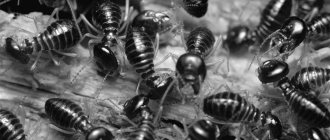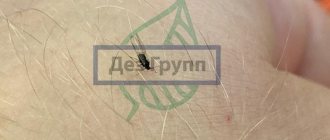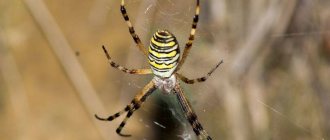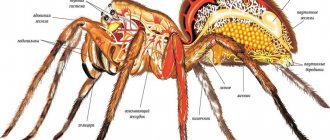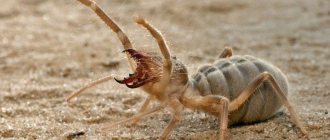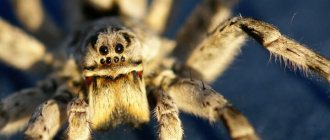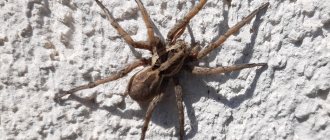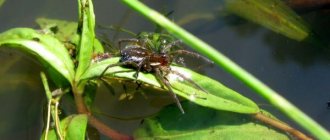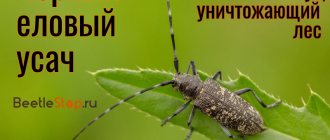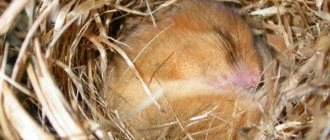Mammals
The mammal fauna includes 90 species from 8 orders and 21 families, of which 33 species from the order Rodents, 18 species from the order Carnivores, 16 species from the order Chiroptera, 11 species from the order Insectivores, 8 species from the order Artiodactyls, 2 species from the order Lagomorpha, 1 species from the order Odd-toed ungulates and 1 species from the order Cetacea.
The roe deer is a small graceful deer, the smallest representative of its family.
Squad: Carnivores
Wolf
(lat. Canis lupus) is a mammal of the genus Wolves, family Canidae. It lives in a wide variety of landscapes, preferring open ones: forest-steppes, steppes, semi-deserts, and, if possible, avoiding continuous forests. Photos
Common jackal
(lat. Canis aureus) is a species of animal of the Canidae family, genus Wolves. It is found in the south of the region in the floodplain of the Don River.
Raccoon dog
(lat. Nyctereutes procyonoides) is a mammal of the Canidae family, genus Raccoon dogs. Intentionally introduced and self-dispersing species. It lives along overgrown banks and floodplains of rivers, in wet meadows with fields, and in riverine forests. Photos
Common fox
(lat. Vulpes vulpes) - a representative of the Canidae family, the genus Foxes. The fox prefers forest-steppe, open areas with bushes that provide plenty of shelter. Photos
Corsac, or steppe fox
(lat. Vulpes corsac) is a species of animal of the Canidae family, genus Foxes. It is found in the south of the region, in the steppe, less often in the forest-steppe natural zone. Photos
Common lynx
(lat. Lynx lynx) is a species of animal from the order Carnivora, family Feline, genus Lynx. It is found in the north and north-west of the region in forests with dense undergrowth and windbreaks, sometimes entering the forest-steppe. The species is listed in the Red Book of the Rostov Region with the status “Rare”. Photos
Steppe cat
(lat. Felis silvestris lybica) is a mammal of the Feline family, genus Cats, subspecies of the Forest cat (lat. Felis silvestris). Found in the delta and floodplain of the Don.
Badger
(lat. Meles meles) is a species of mammals from the genus Badgers. It is found in forests of all types, less often in open spaces in bush thickets, which provide plenty of shelter. To dig holes, it often chooses places with soft soil and natural uneven terrain: ravines, gullies, steep banks of reservoirs. Photos
River otter
(lat. Lutra lutra) is a species of animal of the Mustelidae family, genus Otter. Settles in forests of all types, choosing rivers with banks littered with windbreaks, and less often, lakes and ponds with areas that do not freeze in winter. The species is listed in the Red Book of the Rostov Region with the status “Rare”. Photos
Marten
(lat. Martes martes) is a predatory mammal of the Mustelidae family. It lives in deciduous and mixed forests, preferring large forests and dense deciduous forests. Photos
Stone marten
(lat. Martes foina) is a mammal of the genus Marten, family Mustelidae. Lives in deciduous and mixed sparse forests, settles on the edges, in fields with thickets of bushes. Photos
European mink
(lat. Mustela lutreola) is a predatory mammal of the Mustela family. The habitat covers forest, less often forest-steppe natural zones. Settle along valleys and banks of remote forest rivers, banks of streams, lakes, ponds, swamps, floodplain thickets of bushes and reeds. Photos
Also on the territory of the Rostov region lives a subspecies of the European mink - the Caucasian European mink (lat. Mustela lutreola turovi). The subspecies is listed in the Red Book of the Rostov Region with the status “Uncertain by status.”
American mink
(lat. Neovison vison) is a species of animal of the genus Ferrets, family Mustelidae. Intentionally introduced and self-dispersing species. It lives in forest and forest-steppe natural zones, preferring to settle along valleys and banks of remote forest rivers, near forest lakes, and floodplain thickets of bushes and reeds. Photos
Forest ferret
(lat. Mustela putorius) is a mammal of the Mustelidae family, genus Ferrets. In the Rostov region it is found in small forests and individual groves. The species is listed in the Red Book of the Rostov Region with the status “Undetermined by status.” Photos
Steppe ferret
(lat. Mustela eversmanni) is a species of animal of the Mustelidae family, genus Ferrets. Found in steppe, and less often forest-steppe natural zones, it settles in the burrows of hamsters, gophers and mole rats. The species is listed in the Red Book of the Rostov Region with the status “Declining in numbers.”
Ermine
(lat. Mustela erminea) is a mammal of the genus Ferrets, family Mustelidae, order Carnivora. The habitat covers forest-steppe, less often forest, natural zones. Settle along river valleys, banks of streams, lakes, ponds, swamps, on forest edges, in copses, groves and thickets of bushes. The species is listed in the Red Book of the Rostov Region with the status “Undetermined by status.” Photos
Dressing
(lat. Vormela peregusna) is a representative of the Mustelidae family, the genus of the Bandage. Lives in deserts, semi-deserts, arid rocky areas in mountain valleys. The species is listed in the Red Book of the Rostov Region with the status “Undetermined by status.”
Weasel
(lat. Mustela nivalis) is a species of animal of the Mustelidae family, genus Ferrets. It lives throughout the region in various natural landscape complexes, most often in fields, on the edges, in open forests, and bushes. Photos
Order: Artiodactyls
Elk
(lat. Alces alces) is a species of animal of the Deer family, genus Elk. Prefers forests with dense undergrowth and tall grasses. Photos
Red deer
(lat. Cervus elaphus) is a species of mammal from the genus True deer. Intentionally introduced species. It lives in light broad-leaved forests, less often in mixed forests, where glades alternate with copses. Photos
Spotted deer
(lat. Cervus nippon) is a mammal of the genus True deer, family Deer. Intentionally introduced species. Inhabits sparse broad-leaved and mixed floodplain forests.
The acclimatization of sika deer was carried out in 1971-75, when 50 individuals from the Far East and from the Khopersky Nature Reserve in the Voronezh Region were brought to several hunting grounds in the region.
European fallow deer
(lat. Dama dama) is an artiodactyl mammal of the Fallow Deer genus, Deer family. Intentionally introduced species. Prefers sparse broad-leaved and mixed forests alternating with lawns and clearings.
Acclimatization of fallow deer began in 1975 when 15 individuals were brought to the Aleksandrovsky production experimental hunting area.
European roe deer
(lat. Capreolus capreolus) is a species of animal of the Deer family, the genus Roe deer. It lives in forests, less often in forest-steppe, preferring areas of light, sparse forest with dense undergrowth.
Saiga antelope
(lat. Saiga tatarica) is a species of animal from the order Artiodactyls, family Bovids, genus Saiga. It lives in the steppes and semi-deserts of Central and Central Asia, can migrate over long distances and sometimes enters the southeast of the Rostov region into the Oryol, Remontnensky and Proletarsky districts. Saiga antelopes are also bred in the nursery at the Rostovsky Nature Reserve. The species is listed in the Red Book of the Rostov Region with the status “Declining in numbers.” Photos
European mouflon
(lat. Ovis gmelini musimon) is a ruminant mammal, family Bovids, genus Ram, subspecies of Mouflon (lat. Ovis gmelini). Intentionally introduced species. Prefers various open grassy areas and mountain slopes.
Mouflons were brought to the Aleksandrovsky production experimental hunting area from Austria in 1995.
Boar
(lat. Sus scrofa) is an omnivorous mammal from the order Artiodactyla, family Pig, genus Boar. The most preferred habitat for wild pigs in the Rostov region are damp, swampy forest areas. Photos
Order: Odd-toed ungulates
Domestic feral horse
(lat. Equus ferus caballus) is a large odd-toed ungulate mammal of the Equidae family, genus Horse. A herd of feral horses lives in the Rostovsky State Natural Biosphere Reserve.
Order: Insectivores
Common hedgehog
(lat. Erinaceus europaeus) is a mammal of the Hedgehog family, the genus Eurasian hedgehogs. It lives in various natural landscape complexes, most often in sparse deciduous and mixed forests, copses, woodlands, bushes, and on the edges. Photos
Also on the territory of the Rostov region are also inhabited by the long-eared hedgehog (lat. Hemiechinus auritus) and the Eastern European, or white-breasted hedgehog (lat. Erinaceus concolor). The long-eared hedgehog differs from the ordinary hedgehog in having large ears, and the Eastern European hedgehog has a white spot on its chest, which is why it is also called the white-breasted hedgehog. The long-eared hedgehog is included in the Red Book of the Rostov region with the status “Declining in numbers.”
Common mole
(lat. Talpa europaea) - a representative of the Mole family, genus Common moles. Prefers sparse deciduous forests, copses, forest edges with dense forbs, meadows, fields, gardens, vegetable gardens and other biotopes with moderately moist loose soils. Photos
Also on the territory of the Rostov region the Caucasian mole (lat. Talpa caucasica) also lives.
Russian muskrat
(lat. Desmana moschata) is a species of animal of the genus Muskrat, family Mole, order Insectivorous. Inhabits floodplain reservoirs along high steep banks overgrown with aquatic vegetation. The species is listed in the Red Book of the Rostov Region with the status “Rare”.
Common shrew
(lat. Sorex araneus) is a species of animal from the order Insectivores, the most common representative of the shrew family. The most preferred habitat for the common shrew are sparse forests, copses, thickets of bushes, thickets of tall grass, and forest edges.
In addition to the common shrew, the following species of the shrew family live on the territory of the Rostov region: Small shrew (lat. Sorex minutus) - from the genus Shrew; White-bellied shrew (lat. Crocidura leucodon) and small shrew (lat. Crocidura suaveolens) - from the genus Shrew; Common shrew (lat. Neomys fodiens) - from the genus Kutora.
Order: Lagomorpha
Brown hare
(lat. Lepus europaeus) is a mammal of the Leporidae family. A typical inhabitant of steppe and forest-steppe natural zones, it is found in open spaces of the forest zone: clearings, burnt areas, edges, meadows, clearings. Photos
Wild or European rabbit
(lat. Oryctolagus cuniculus) is a small mammal of the Hare family, genus Rabbits. Intentionally introduced species. Rabbits settle in thickets of bushes and tall grasses, and are found in sparse forests, gardens and open spaces: edges, clearings, clearings.
The wild rabbit was acclimatized in several hunting grounds in the Rostov region in 1977.
Order: Chiroptera
Kozhan late
(lat. Eptesicus serotinus) is a large bat from the genus Kozhany. It lives in various anthropogenic landscapes: in gardens, parks, and is often found in settlements located near small and medium-sized rivers.
Two-tone leather
(lat. Vespertilio murinus) is a mammal of the genus Bicolored bats, family Smooth-nosed bats. It lives in forests in open areas: on the edges, along the banks of rivers and lakes, near ravines and ditches.
Giant Vessel
(lat. Nyctalus lasiopterus) is a large bat from the genus Vechernitsa. Inhabits deciduous and mixed forests, hunting large insects at dusk over forest edges and the surfaces of reservoirs. The species is listed in the Red Book of the Rostov Region with the status “Rare”.
In addition to the giant noctule, the territory of the Rostov region is inhabited by the small noctule (lat. Nyctalus leisleri) and the red noctule (lat. Nyctalus noctula). The lesser noctule is included in the Red Book of the Rostov region with the status “Uncertain status.”
Long-eared bat brown
(lat. Plecotus auritus) is a small mammal from the genus Ushana. It lives in various open areas: on the outskirts of forests, on forest edges, along the banks of rivers and lakes, on agricultural lands.
Water bat
(lat. Myotis daubentonii) is a species of animal of the family Smooth-nosed bats, genus Noctules. Settles along river floodplains; It uses tree hollows and human buildings as shelters. Photos
In addition to the water bat, the following species of smooth-nosed bats from the genus Nochnitsa live on the territory of the Rostov region: Pond bat (Lat. Myotis dasycneme), Whiskered bat (Lat. Myotis mystacinus), Large or gray bat (Lat. Myotis myotis), Steppe bat (Lat. lat. Myotis aurascens). The pond bat is included in the Red Book of the Rostov region with the status “Uncertain status.”
Forest pipistrelle, or Nathusius
(lat. Pipistrellus nathusii) is a small bat from the genus Nedopyri. It lives in floodplain forests, and is also often found in anthropogenic landscapes - parks, forest belts, rural settlements.
In addition to the forest pipistrel, the following species of bats from the genus Bats live in the Rostov region: Pygmy pipistrel, or small pipistrel (lat. Pipistrellus pygmaeus), dwarf pipistrel (lat. Pipistrellus pipistrellus), Mediterranean bat, or Kul's pipistrel (lat. Pipistrellus kuhlii ).
Northern Kozhanok
(lat. Eptesicus nilssonii) is a mammal of the genus Kozhany, family Smooth-nosed bats, order Chiroptera. It lives on the outskirts of forests, on the edges, along the banks of rivers and lakes, in small agricultural lands, and in gardens.
Order: Rodents
Common beaver, or river beaver
(lat. Castor fiber) - a representative of the Beaver family, genus Beavers. Reacclimatized species. The most preferred habitat for the river beaver is deciduous forests. Settle along the banks of slow-flowing rivers, oxbow lakes and lakes.
River beavers in the Rostov region were completely destroyed by the 20s of the 20th century as a result of intensive fishing. Reacclimatization of the species was carried out in 1973-77, then several individuals were settled in the swampy floodplains of the Elani, Kalitva, Berezovaya and other rivers. Now the number of beavers in the region is 700-800 individuals.
Steppe marmot, or Baibak
(lat. Marmota bobak) is a species of animal of the Squirrel family, genus Marmot. The marmot lives on the right side of the Don River in the flat steppes, in unplowed grass and forb meadows, and on the edge of cultivated fields.
Speckled gopher
(lat. Spermophilus suslicus) is a representative of the Squirrel family, the genus Susliki. Inhabits lowland feather grass steppes and dry meadows in the southern part of the forest-steppe zone. The species is listed in the Red Book of the Rostov Region with the status “Undetermined by status.”
In addition to the speckled ground squirrel, the territory of the Rostov region is also inhabited by the small ground squirrel (lat. Spermophilus pygmaeus) and the European or gray ground squirrel (lat. Spermophilus citellus).
Common squirrel
(lat. Sciurus vulgaris) is a species of mammals from the genus Squirrel. Intentionally introduced species. Settles in forests of all types, preferring pine, spruce and cedar forests. Photos
The introduction of squirrels was carried out in 1973-80, then 2794 individuals were settled in the central and western parts of the region, which successfully adapted to the conditions of low forest cover.
Forest Dormouse
(lat. Dryomys nitedula) is an arboreal rodent of the Sonyaceae family. It is found in deciduous and mixed forests, gardens and tree nurseries with dense undergrowth.
Great jerboa, or ground hare
(lat. Allactaga major) is a species of mammal from the genus Earthen hares. Prefers steppe and forest-steppe landscapes with hard soil and sparse grass.
Tarbaganchik
(lat. Pygeretmus pumilio) is a small rodent of the Jerboa family, genus Tarbaganchiki. The Sal steppes up to the Don River are found in open saline and desertified areas of the steppe part of the region. The species is listed in the Red Book of the Rostov Region with the status “Undetermined by status.”
Common Eurasian
(lat. Stylodipus telum) is a small rodent of the Jerboa family, genus Emuranchiki. It lives in the east of the region in the Salsky steppes and in other sandy, clayey and gravelly places of the Rostov region. The species is listed in the Red Book of the Rostov Region with the status “Undetermined by status.”
Common mole rat
(lat. Spalax microphthalmus) is a large rodent of the mole rat family of the genus Mole rats. It is found in steppe landscapes and in various grassy areas, forest edges and clearings.
Muskrat
(lat. Ondatra zibethicus) is a mammal of the Hamster family. The muskrat leads a semi-aquatic lifestyle, settling along the banks of rivers, lakes, canals and especially readily near freshwater swamps. Photos
Common hamster
(lat. Cricetus cricetus) is a species of animal of the genus True hamsters, family Hamsters. It lives in forest and steppe natural zones, preferring forest-steppe, settling in fields, meadows, forest edges, and bushes. Photos
In addition to the common hamster, the following species of the hamster family live on the territory of the Rostov region: Gray hamster (lat. Cricetulus migratorius), Radde's hamster, or Cis-Caucasian hamster (lat. Mesocricetus raddei).
Common mole vole
(lat. Ellobius talpinus) is a small rodent of the genus Mole voles, family Hamsters. It lives in forest-steppe and steppes, less often in deserts and semi-deserts, in areas with soft soil and well-developed grass cover.
Steppe pied
(lat. Lagurus lagurus) is a small animal of the Hamster family. Inhabits steppes and the southern part of forest-steppe in areas with grass and forb vegetation. The species is listed in the Red Book of the Rostov Region with the status “Undetermined by status.”
Gray rat, or pasyuk
(lat. Rattus norvegicus) is a mammal of the genus Rat, family Mouse. In nature, it lives along the banks of various bodies of water, however, most now prefer to settle where there are people nearby - in gardens, fields, in garbage dumps, in human dwellings. Photos
In addition to the gray rat, the Black Rat (lat. Rattus rattus) also lives on the territory of the Rostov region.
Water vole
(lat. Arvicola terrestris) is a representative of the Hamster family, order Rodents. It is found along rivers, streams and in swamps, less often in meadows and fields, and is less common in wooded areas. Photos
Common vole
(lat. Microtus arvalis) is a species of animal from the Hamster family, genus Gray voles. Inhabits forest-steppe and steppe natural zones in fields, meadows, agricultural lands, forest edges, and woodlands with dense grass cover. Photos
In addition to the common vole, the social or steppe vole (lat. Microtus socialis) also lives on the territory of the Rostov region.
Steppe mousebird
(lat. Sicista subtilis) is a species of animal of the genus Mouse, family Mouse. Inhabits steppe and forest-steppe natural zones, inhabits steppes, steppe areas, dry ravines, deciduous and steppe meadows. The species is listed in the Red Book of the Rostov Region with the status “Undetermined by status.”
In addition to the steppe mouse, the following species from the genus Mouse live on the territory of the Rostov region: Forest mouse (lat. Sicista betulina), Dark mouse (lat. Sicista severtzovi), Strand mouse (lat. Sicista strandi). The dark mouse and Shtrand's mouse are listed in the Red Book of the Rostov region with the status “Uncertain status.”
Field mouse
(lat. Apodemus agrarius) is a species of animal from the order Rodents, family Mouse, genus Forest and field mice. It lives in open biotopes - meadows, forest edges, bush thickets, and agricultural lands. Photos
In addition to the field mouse, the following species from the Mouse family live on the territory of the Rostov region: House mouse (lat. Mus musculus), Kurganchik mouse (lat. Mus spicilegus), Yellow-throated mouse (lat. Apodemus flavicollis), Yellow-bellied mouse (lat. Apodemus fulvipectus), Small forest mouse (lat. Apodemus uralensis), Little mouse (lat. Micromys minutus).
Order: Cetaceans
Black Sea porpoise, or Azovka
(lat. Phocoena phocoena relicta) is a mammal of the family Porpoises, order Cetaceans, subspecies of the common porpoise (lat. Phocoena phocoena). It is found in the Taganrog Bay and at the entrance to the Don River during the ice-free period. In summer, the number in the Sea of Azov was estimated at 3,000 individuals. The subspecies is listed in the Red Book of the Rostov Region with the status “Rare”.
Are Crimean centipedes dangerous for humans?
One bite is not enough to kill a person or child. This fact is encouraging, especially considering that this insect may accidentally settle in your home. The venom of the ringed centipede is not a threat to humans, although the bite itself is frightening and causes pain and unpleasant symptoms. Victims associate this pain as being stung by several bees at the same time. The poison becomes especially toxic in spring. First aid after a lesion should be immediate. The wound should be thoroughly rinsed with water, if possible. Next, it must be treated with any antiseptic (alcohol, chlorhexidine, miramistin). Apply a bandage, preferably sterile, and change it every 12 hours. It is also recommended to drink plenty of fluids (to quickly remove toxins from the body), remain calm, and not drink alcohol (it enhances the effect of toxins in the body).
The bite of the Black Sea scolopendra is manifested by the following consequences:
- Where the centipede bit, traces of tentacles are clearly visible - two punctures.
- Immediately after the bite, a burning sensation is felt, and then a sharp pain occurs.
- The skin around the affected area takes on a red tint.
- Swelling occurs and lasts for several days.
- There may be an increase in body temperature, a feeling of weakness, nausea and dizziness.
- Allergy sufferers most often experience a severe allergic reaction.
However, if she was bitten while on vacation in Crimea, there is no need to be afraid; all symptoms after the bite will go away within a maximum of 2 days. If the affected person has an immune deficiency or is allergic, he should contact a medical facility for help. It is also necessary to visit a doctor if your health worsens - body temperature increases, malaise increases, and swelling occurs. After a poisonous centipede bite, you can take an antihistamine to relieve itching, swelling, redness, and apply special ointments or gels that relieve swelling and irritation on the skin.
Each maxilla consists of 6 segmented sections, the latter pointed and curved inward. They contain poisonous glands, the mouths of which open at the ends. When biting a victim, the centipede injects the main portion of poison through its jaws. Each section of the body also contains two venom glands, their ducts extending to the edges of the scutes. When it senses danger, it curls up into a spiral, and a secretion with a distinct odor pours out from the poisonous glands.
Main components of the Crimean scolopendra venom (DL50):
- acetylcholine;
- histamine;
- hyaluronidase;
- kininase;
- cholinesterase;
- serotonin;
- BAEE-esterase.
Bitten insects and arachnids quickly die. In small animals, mobility decreases, excessive salivation (salivation), constriction of the pupils, muscle twitching is observed, and death is possible.
Are spiders and cockroaches the enemy?
Birds
Due to the fact that a powerful branch of the flyway of migrating waterfowl and land birds, nesting both in the Central Russian Plain and in the north of Russia, passes through the Don River valley, the avifauna of the Rostov region is rich and diverse; it has 332 species of birds, 149 of which are nesting (breeding is expected for another 35 species).
In terms of species and quantity, the group of waterbirds prevails, confined to various aquatic and semi-aquatic biotopes, and in particular to the floodplain and delta of the Don River. This ecological group is represented primarily by waders: lapwing, lapwing, stilt, oystercatcher, curlew, godwit, waders, fifi, blackling, herbal, porpoise, common avoce, runner, etc.; and seagulls - lake, small, gray, silver, etc.; ducks are often seen - mallard, wigeon, tufted duck, teal, pintail, shoveler; geese - white-fronted, gray, lesser white-fronted, lesser bean; terns - marsh, white-winged, black; grebes - grey-cheeked, black-necked, red-necked and small; swans - whooper, mute, small; herons - gray, red, yellow, great white and little white; cranes - demoiselle, grey, white-naped crane; and etc.
The Great Spotted Woodpecker has a variegated coloration of a combination of black, white and red colors.
Despite the low forest cover of the territory, which is only 2.5%, the dendrophilous bird complex of the region is relatively rich and diverse. Pigeon-like birds are often found here: wood pigeon, clint, common and ringed doves; woodpeckers - gray-haired, green, Syrian, great spotted; day and night predators: kestrel, falcon, long-eared owl, scops owl; as well as chaffinch, oriole, greenfinch, tree pipit, great tit, blue tit, little flycatcher, etc.
58 species of rare birds are included in the Red Book of the Rostov Region: European black-throated loon, pink pelican, Dalmatian pelican, little cormorant, yellow heron, spoonbill, ibis, white stork, black stork, red-breasted goose, lesser white-fronted lesser white-fronted white-fronted lesser swan, gray duck, white-eyed duck. , white-headed duck, osprey, Common buzzard, steppe harrier, European tuvik, common buzzard, short-tailed snake eagle, pygmy eagle, steppe eagle, greater spotted eagle, lesser spotted eagle, imperial eagle, golden eagle, white-tailed eagle, griffon vulture, saker falcon, peregrine falcon, steppe kestrel, gray crane, demoiselle crane, crane, bustard, little bustard, common plover, sandpiper, stilt, avocet, oystercatcher, sandpiper, slender-billed curlew, great curlew, middle curlew, great godwit, steppe tirkushka, meadow tirkushka , black-headed gull, blackened blackbird, little tern, eagle owl, great owl, green woodpecker, common spotted woodpecker, black lark, gray shrike.
Diversity of nature in the Rostov region
The nature of the Rostov region is famous for its diverse landscape and mesmerizing beauty. Steppe expanses turning into green forests, the banks of the Don River and the coast of the warm, azure Azov Sea. Such a diverse landscape naturally produces a variety of flora and fauna. Geographically, the region is located in the South-European part of Russia. From the east of the region and throughout its territory there is a river, the Don, which has many tributaries, the largest of which are the Seversky Donets and the Manych. The Sea of Azov is in the southwestern part of the region. This area is characterized by a favorable warm and dry climate. Based on these geographic and climatic conditions, the natural landscape, its features, and uniqueness were formed.
Reptiles and amphibians
The herpetofauna of the Rostov region is distinguished by its special species diversity; it has 27 species - 13 species of reptiles and 14 species of amphibians.
Of the reptiles in the region, there is 1 species of turtle, 4 species of lizards and 8 species of snakes: marsh turtle (Latin: Emys orbicularis), multi-colored foot-and-mouth disease (Latin: Eremias arguta), sand lizard (Latin: Lacerta agilis), striped lizard (Latin: Lacerta strigata), viviparous lizard (lat. Zootoca vivipara), common copperhead (lat. Coronella austriaca), yellow-bellied snake, or Caspian snake (lat. Dolichophis caspius), patterned snake (lat. Elaphe dione), four-striped snake, or Palasov (lat. Elaphe quatuorlineata), lizard snake (lat. Malpolon monspessulanus), common snake (lat. Natrix natrix), water snake (lat. Natrix tessellata), steppe viper (lat. Vipera ursinii). The Red Book of the Rostov Region includes the multi-colored foot-and-mouth disease in the “Rare” category, the yellow-bellied snake, the four-striped snake, the patterned snake, the common copperhead and the steppe viper in the category “Declining in numbers.”
Of the amphibians, 1 species of salamander, 2 species of newts, 2 species of toads and 9 species of frogs have been recorded: Caucasian salamander (lat. Mertensiella caucasica), crested newt (lat. Triturus cristatus), common newt (lat. Lissotriton vulgaris), green toad (lat. . Bufotes viridis), common or gray toad (lat. Bufo bufo), red-bellied toad (lat. Bombina bombina), common spadefoot toad (lat. Pelobates fuscus), common tree frog (lat. Hyla arborea), lake frog (lat. Pelophylax ridibundus), pond frog (lat. Pelophylax lessonae), edible frog (lat. Pelophylax esculentus), grass frog (lat. Rana temporaria), sharp-faced frog (lat. Rana arvalis), Asia Minor or Caucasian frog (lat. Rana macrocnemis) . The Red Book of the Rostov Region includes the common newt in the category “Endangered” and the sharp-faced frog in the category “Uncertain status.”
What does the karakurt spider eat?
Photo: Poisonous karakurt spider
The main diet of poisonous spiders is insects. To catch them, spiders weave webs, which they hang on tree branches, in the grass, etc. The web of females is denser than that of males. It is noteworthy that spider webs are not very viscous, and therefore the victim who gets caught in them will no longer be able to get out. Having caught their prey, the spiders first immobilize it with poison, and then suck out the liquid contents of the body.
What serves as the food supply for karakurt:
- flies;
- horseflies;
- locusts;
- grasshoppers;
- beetles;
- mosquitoes;
- caterpillars;
- bloodworms;
- other arthropod species;
- snakes;
- lizards.
In rare cases, small invertebrate animals that get caught in the web and cannot get out of it can serve as a food source.
It is worth noting that the venom of these spiders can kill even animals such as a cow, horse or camel. Only hedgehogs and dogs can easily tolerate it. For humans, insect venom poses a great danger. It is considered to be most toxic during marital relations. It should be noted that even the venom of a small spider is enough to kill an adult, strong man. The venom has a pronounced paralytic effect, which instantly immobilizes the spider's victim.
Fish
The ichthyofauna of the Rostov region includes 1 species of lampreys and 72 species of bony fish (except for purely marine fish that occasionally enter the Taganrod Bay, which are usually not found there) from 16 orders and 20 families.
Species are categorized into orders and families. Order Sturgeon, family Sturgeon: Russian sturgeon, sterlet, beluga, stellate sturgeon. Order Salmonidae, family Salmonidae: salmon. Order Herring-like, Herring family: Don herring, Azov herring, bellyfish, sprat; Anchovy family: anchovy. Order Mullet-shaped, family Mullet: mullet, singil. Order Atheriniformes, family Atherinaceae: arterina. Order Flounder, family Flounder: river flounder. Order Pike-like, family Pike: common pike. Order Eels, family River eels: river eel. Order Cypriniformes, family Cyprinidae: roach, ram, carp, common dace, Danilevsky dace, chub, ide, rudd, kalinka (bobyrets), asp, verkhovka, tench, Volga podust, whitefin gudgeon, Azov-Black Sea shem, bleak, bystryanka, silver bream, bream, white-eye, bluefish, fisherman, saberfish, bitterling, golden crucian carp, silver crucian carp, carp; Loach family: loach, spined loach; Balitoriaceae family: baleen loach. Order Catfish, family Catfish: common catfish. Order Codlike, family Burbot: burbot. Order Sticklebacks, family Sticklebacks: three-spined stickleback, small southern stickleback. Order Needlefish, family Needlefish: Black Sea plump-cheeked needlefish. Order Perciformes, family Perchaceae: common ruff, Don ruffe (privet), river perch, common pike perch, bersh, percarina; Goby family: Azov goby, Black Sea goby, sand goby, round goby, tsutsik goby, Shirman goby, colt goby, messenger goby, bubyr goby, Caspiozoma goby, Knipovich's long-tailed goby. Order Lampreys, family Lampreys: Ukrainian lamprey.
To reproduce, the Russian sturgeon leaves the Black Sea and rises up the Don.
15 species of fish and 1 species of cyclostome are included in the Red Book of the Rostov region: Ukrainian lamprey, sterlet, stellate sturgeon, beluga, Russian sturgeon, white-eye, Azov-Black Sea shemaya, Volga podust, kalinka, Danilevsky dace, common dace, whitefin gudgeon, carp, golden crucian carp, loach, caspiosa goby.
Natural enemies of the karakurt spider
Photo: Poisonous karakurt spider
Despite the fact that karakurts are considered one of the most dangerous creatures on earth, they have enemies in their natural habitat. The greatest danger to them is posed by herd ungulates, since in huge numbers they trample not only the arthropods themselves, but also their cocoons with eggs.
In addition to ungulates, the enemies of spiders are sphex wasps. They attack arthropods in a similar way. Wasps have a special gland that produces poison, which they inject into spiders, immobilizing them. After this, the insects quietly eat the black widow.
Another enemy of poisonous and dangerous arthropods are riders. They lay eggs in arthropod cocoons. Subsequently, the emerging larvae eat the small spiderlings. It should be noted that there are other enemies that are also capable of eating karakurts in large quantities. These are hedgehogs. They are absolutely not afraid of attacks from these insects, since they are reliably protected by their shell with needles.
Spiders are also theoretically eaten by some species of other spiders or arthropods. However, they must be very dexterous and agile in order to attack the black widow before she can inject her poison. However, this happens extremely rarely, since karakurts are very fast.
In some regions, the reduction in the number of karakurts is caused by human activities associated with the destruction of rodents, as well as the use of insecticides of chemical origin.
Crustaceans and molluscs
Various crustaceans live on the territory of the Rostov region, which are divided into two subclasses - lower and higher. Lower crustaceans are small and microscopic primitive crustaceans, represented by four classes: branchiopods (lat. Branchiopoda), copepods (lat. Copepoda), cladocera (lat. Cladocera) and shellfish (lat. Ostracoda). The class of branchiopods is represented by such widespread species as spring scale and Artemia salina; the copepod class is represented by cyclops - Cyclops strenuus, C. oithonoides, C. vernalis and diaptomus - Diaptomus salinus and D. asiatlcus; the cladoceran class is represented by daphnia - Daphnia magna, D. longispina; barnacles are represented by the widespread species Cyclocypris and Limnicythere. Higher crayfish are represented by five orders: amphipods (Latin Amphipoda), cumaceans (Latin Cumacea), mysids (Latin Mysida), isopods (Latin Isopoda), decapods (Latin Decapoda). Here we can distinguish well-known species belonging to the ecological group of aquatic crustaceans, such as the water donkey - from the order of isopods crustaceans and the narrow-toed crayfish - from the order of decapod crustaceans, most often found in small tributaries of the Don; woodlice (armadillo) - belonging to the group of terrestrial crustaceans. Among crustaceans, the thick-fingered crayfish (lat. Astacus pachypus) is included in the Red Book of the Rostov Region with the status “Endangered”.
The following types of mollusks live in the reservoirs of the Rostov region: barley - ordinary, swollen, thick; toothless - ordinary and narrow; river zebra mussel, river pea, brook ball - belonging to the class of bivalves (lat. Bivalvia); meadow viviparous, common lithoglyph, bitinia tentacular, common shutter, common pond snail, horny coil - belonging to the class of gastropods (lat. Gastropoda).
Life cycle
Mating occurs at the end of summer. Having discovered a female, the tarantula begins a kind of “mating dance”, and the female, ready for mating, repeats its movements. Immediately after copulation, the male must have time to escape so as not to be eaten. Under natural conditions, a fertilized female goes into hibernation for the winter. In the spring, when the eggs are ripe, she weaves a cocoon, where she lays up to 50 eggs. The cocoon is constantly carried around with it attached to its abdomen. Immediately after birth, small spiders climb onto their mother and settle there in several layers. And as soon as the cubs are old enough, she tears them off from the abdomen and scatters them away from her own home. The lifespan of a spider in its natural environment is about 2 years.
Keeping the South Russian tarantula at home
The ability to control oneself, attentiveness, and caution are required from those who decide to have a Mizgir as a pet. These spiders are very interesting to watch, they are funny, smart, so there are a lot of people who are fascinated by them.
A terrarium or an aquarium with a lid can become a home for a mizgir. Ventilation is required . The minimum dimensions of the arachnarium are calculated taking into account the paw span of the future resident - the length and width should be 3 times greater. The spider can jump 20 cm in height, so this must be taken into account.
Important! The number of molts affects the lifespan, and the better the spider feeds, the more often it molts, because the chitinous “framework” does not allow it to grow. The pet must be kept from hand to mouth so that it stays with its owner longer.
The bottom of the arachnarium is covered with soil: sand, turf, coconut fiber, vermiculite or peat. The height of the layer must be at least 30 cm so that the mizgir can make a full-fledged burrow.
The pet will love to sunbathe on a piece of driftwood under a lamp; a small number of plants and constant moistening of the substrate are also useful. He can bathe in the installed drinking bowl. Feeding is not difficult - flies, ground beetles, crickets, cockroaches, mosquitoes, etc. are sold in pet stores, but you can catch them yourself.
Cleaning is carried out once every 2 months by luring the spider out with food or a small ball on a string and transplanting it into another container. In winter, the spider can hibernate, sealing the entrance to the hole, or simply become less active if the temperature has not changed and remains at 20-30 degrees.
Tarantulas are considered one of the most interesting objects to observe, but children should not have them . Despite its size, a spider cannot be called a toy; any careless movement can cause aggression. The shaggy handsome man will bring many pleasant moments to teenagers and adults, entertaining them with hunting and home improvement.
Return to content
